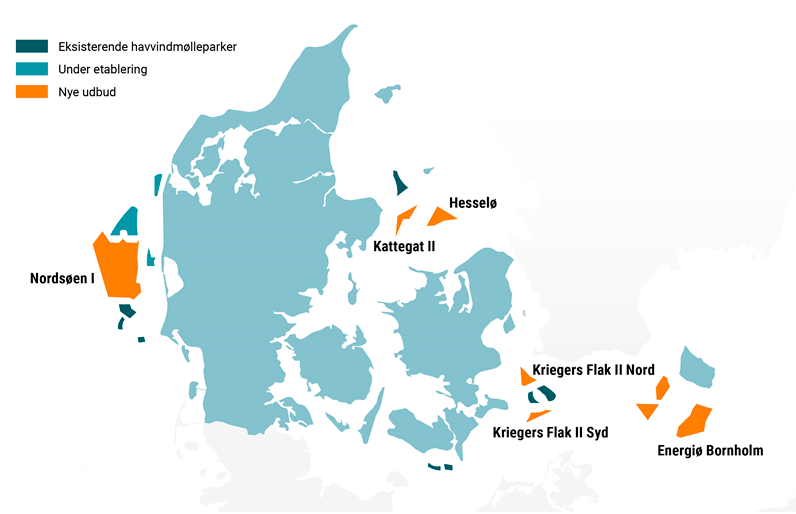On May 30th 2023 the government and a broad majority of political parties concluded a supplementary agreement on tender frameworks for 6 GW of offshore wind and 3 GW at Bornholm Energy Island. The agreement secures the framework for the upcoming 9 GW offshore wind tenders.
With the supplementary agreement in place, the Danish Energy Agency is already working to convert the agreed access requirements into transparent tender conditions. An important part of this is the market dialogue that the Danish Energy Agency is currently preparing. Over the summer, the Danish Energy Agency plans to invite to a market dialogue with the aim to get constructive input on the tender material and on how the decided tender frameworks are to be converted to a tender material. The concrete implementation of the new decided requirements will also be discussed.
The preliminary studies of the seabed, nature, environment, etc. is already underway, and the Danish Energy Agency is in the process of preparing the tender material.
Possibility of overplanting increases the total capacity
The offshore wind installations on Nordsøen I, Kriegers Flak II and Kattegat II are given the option of free overplanting with the agreement - i.e. freedom to set up more offshore wind than has been politically agreed upon. For Hesselø and Bornholm Energy Island, the strategic environmental assessments are already so far in the process that only a more limited overplanting can be permitted. This means a total capacity of 1.2 GW for Hesselø and 3.8 GW for Bornholm Energy Island. Overall, the 9 GW can thus become 14 GW – and perhaps even more.
Together with consultants, the Danish Energy Agency has prepared a large number of analyses, which lay the professional basis for the decisions regarding the 9 GW of offshore wind. See the most important of the analysis reports on the Danish Energy Agency's website:
- Planlægning af fremtidens havvindmølleparker | Energistyrelsen
- Miljøvurderinger - Energiø Bornholm | Energistyrelsen
Read the agreement (in Danish).
Read the Ministry of Climate, Energy and Supply's press release (in Danish).
Facts:
The 9 GW are located as follows:
- Minimum 3 GW at Energiø Bornholm
- Minimum 3 GW in the North Sea I
- Minimum 1 GW at Kattegat II
- Minimum 1 GW at Kriegers Flak II
- 0.8-1.2 GW at Hesselø.
